What's New
Displaying results 4711 - 4720 of 4914
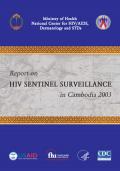
Resource | Publications,
In Cambodia, sentinel surveillance data are used for estimating national HIV prevalence and modeling trends in HIV and AIDS incidence and mortality. In 2003, Cambodia conducted its ninth round of HIV sentinel surveillance (HSS) in 22 of its 24 provinces and municipalities. Sentinel groups surveyed were brothel-based female sex workers (FSW), female beer promoters and women working in karaoke establishments as a proxy for informal female sex workers (IFSW), policemen, and pregnant women attending antenatal care (ANC) clinics.
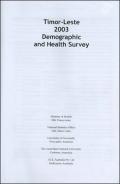
Resource | Publications,
Timor-Leste 2003 Demographic and Health Survey is the first comprehensive assessment of the demographic, health and nutrition status of the population of Timor-Leste since independence. The survey was similar to the surveys conducted in other countries as part of the worldwide program of Demographic and Healh Surveys. It was designed to collect data on fertility, family planning, maternal and child health and nutritional status of adults and children.
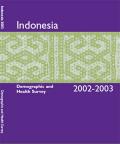
Resource | Publications,
The 2002-2003 Indonesia Demographic and Health Survey (IDHS) is a nationally representative survey of 29,483 ever-married women age 15-49 and 8,310 currently married men age 15- 54. The main purpose of the 2002-2003 IDHS is to provide policymakers and program managers with detailed information on fertility, family planning, childhood and adult mortality, maternal and child health, and knowledge of and attitudes related to HIV/AIDS and other sexually transmitted diseases.
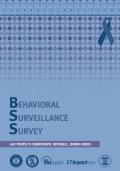
Resource | Publications,
The Behavioral Surveillance Survey (BSS) was conducted in 2000-2001 by the NCCA in partnership with Family Health International (FHI), the Office of the Population Technical Assistance Team (OPTA), and five Provincial Committees for the Control of AIDS (PCCA) including Luang Prabang, Vientiane Municipality, Khammuane, Savannakhet, and Champasak. It is an integral part of the second generation HIV surveillance system. Using standardized and country specific indicators, the BSS had two primary objectives: 1) to determine HIV/AIDS related behaviors among mobile and migratory populations in Lao PDR and measure behavioral changes over time, and 2) to systematically measure HIV risk behavioral trends among sub-populations who may be vulnerable to HIV.
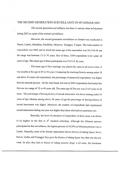
Resource | Publications,
The second generation surveillance was done in various cities in Myanmar during 2003 as a part of the sentinel surveillance. However, the second generation surveillance on female was conducted in Dawei, Lashio, Mandalay, Meikhtila, Monywa, Taunggyi, Yangon.
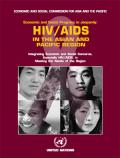
Resource | Publications,
In the two decades since HIV/AIDS was first discovered, it has gone from being an enigmatic, uncommon disease to a less mysterious, rampant pandemic. No region has been spared its impact. Few are unaware of its presence.
The spectre of HIV/AIDS is already here, casting a dark shadow over the Asian and Pacific region. The epidemic is a clear and present danger. It threatens to unravel achievements gained. It also threatens to stall future progress.
Given the many ways in which HIV/AIDS proliferates and affects our societies, the solutions too need a multi-pronged approach. The region’s experience in marrying social and economic policies is vital to tackling the pandemic in all its dimensions.
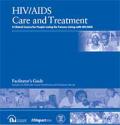
Resource | Publications,
Only about five percent of the 30 million people in poor countries who need treatment for HIV infection are receiving it. As the need for treatment grows, so does the demand. The June 2001 Declaration of Commitment by the United Nations General Assembly states that "Prevention, care, support and treatment for those infected and affected by HIV/AIDS are mutually reinforcing elements of an effective response and must be integrated in a comprehensive approach to combat the epidemic." Encouraged by global support for expanding access to treatment and by a decrease in the price of antiretroviral drugs, programs are increasingly seeking ways to add a treatment component to their prevention, care, and support services.
This facilitator's guide presents new knowledge and skills for delivering and organizing clinical care and treatment services for people living with HIV/AIDS. It is shaped by FHI's longstanding work in HIV-related prevention, care and support activities in more than 60 countries. Recently, FHI began supporting public and NGO efforts to deliver strengthened HIV care and support, including antiretroviral treatment (ART), in three countries at the district level.

Resource | Tools,
Despite the stabilization of HIV prevalence in Cambodia over recent years there has been a dramatic increase in the number of people living with HIV/AIDS who are ill and in need of health care. This reflects the progression of HIV disease in those infected in the past, particularly the large numbers of people infected during the mid-1990s. It is estimated that the peak incidence of illness and death from HIV/AIDS in Cambodia will occur over the next few years. Each year approximately 20 000 people will develop AIDS and die unless expanded interventions are available.
This document is designed as a component in the response that is necessary to address the pressing care needs of person/people living with HIV/AIDS (PHA) in Cambodia. It is written primarily for health care workers who are involved in the care of adults and adolescents (>12 years of age) living with HIV/AIDS. It aims to provide a clear explanation of the basics of ARV therapy. It should be used as an introduction and a reference and should not substitute for comprehensive training in the use of ARV. Similarly it does not seek to address the complex operational requirements of comprehensive HIV care in general, nor of ARV provision in particular.

Resource | Publications,
As the leading UN children and young people's development agency, UNICEF has a number of ongoing strategic programme, advocacy and partnership initiatives designed to strengthen and expand leadership for and by children and young people. HIV/AIDS prevention and care is now one of 5 UNICEF global priorities, in addition to girls’ education, integrated early childhood development, immunisation "plus", and improved protection of children from violence, exploitation, abuse and discrimination. This means that 4 out of 5 UNICEF global organisational priorities are focused on the health and well being of children and young people, and directly working to reduce vulnerability to HIV/AIDS. The MTSP and the UNICEF mission statement and vision are all about facilitating leadership at all levels of society, the family, community, political, religious and economic leaders, including children and young people. UNICEF is integrating HIV/AIDS prevention and care across this dynamic leadership agenda.
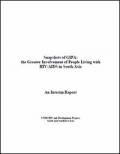
Resource | Publications,
The UNDP supported Project for Greater Involvement of People Living with HIV/AIDS (GIPA), led by Sahara an NGO based in Delhi, is addressing these issues. Through a participatory process an initial stocktaking/situation analysis of the experience of people living with HIV/AIDS was undertaken which provided baseline information for the GIPA Project. Subsequently people living with HIV and AIDS (PLWHA), their groups, organisations and networks have identified capacity building needs and developed strategies and proposals aimed to create a more supportive environment by raising awareness of the situation of PLWHA among the general public and establishing new PLWHA support groups. The intended outcome is more and stronger PLWHA groups capable of impacting the decision making on responses to the HIV epidemic.
The GIPA initiative works to give space for those closest to the epidemic, listen to their voices and include them in the solutions of the enormous challenges posed by HIV/AIDS in South Asia.





